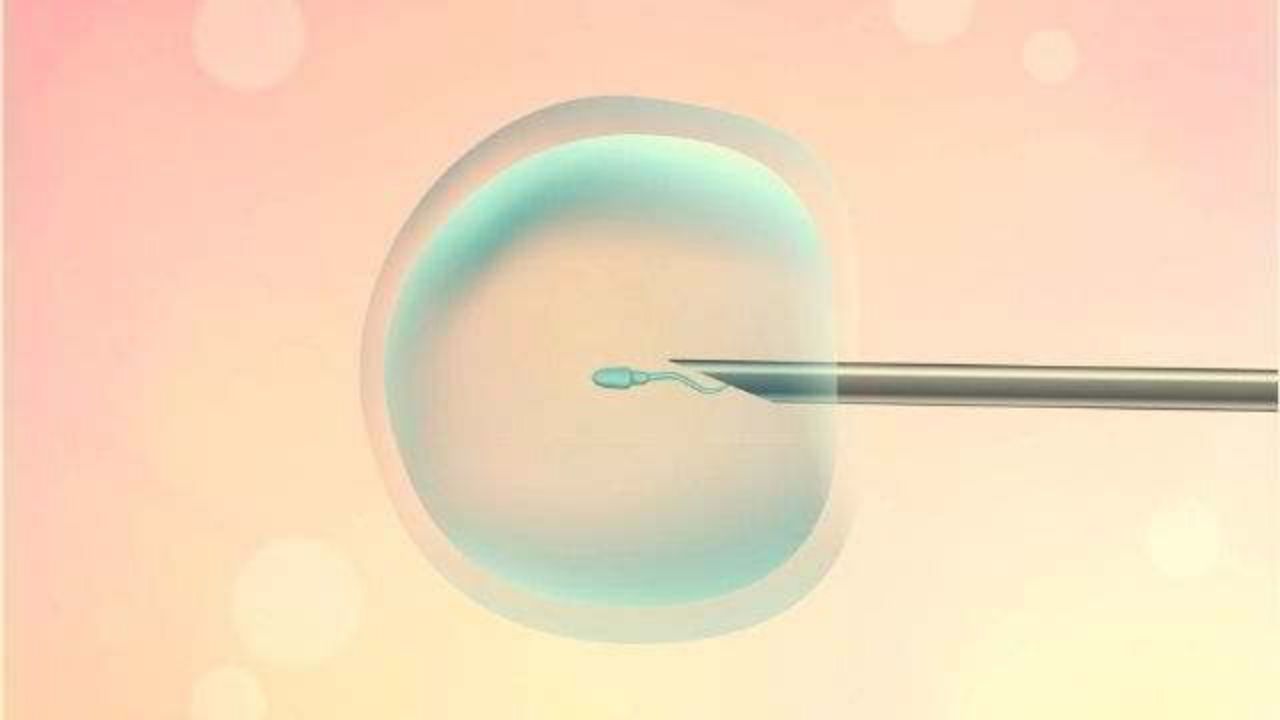As a pediatrician at ONP Hospitals, I’ve witnessed countless stories of resilience and recovery, but one case stands out—little Anaya’s story. Anaya, a spirited four-year-old, came to us after a severe finger injury that happened while she was playing in the backyard....

Overview
Intracytoplasmic morphologically selected sperm injection (IMSI) is a more advanced method of in vitro fertilization (IVF) in which the spermatozoon is selected at a greater magnification before injection. It is possible to assess the fine integrity of the spermatozoon’s nucleus in this manner and to ensure that the spermatozoon is injected with a normal, vacuole-free head.
Everything You Need To Know About IMSI
What is It?
When used in IVF therapy, Intracytoplasmic Morphologically Selected Sperm Injection (IMSI) is a procedure that involves the examination and selection of sperm under a high-magnification digital imaging microscope before microinjection into the egg. When using IMSI, the sperm is picked before the microinjection, which allows for a more timely procedure. It is accomplished by the use of an inverted microscope, which has a magnification power around 6000 times larger than that of the typical reproductive laboratory microscope (400 times), which is used to perform intracytoplasmic sperm injection (ICSI).
When diagnosing male reproductive issues and predicting fertilization and pregnancy outcomes, the shape of the sperm (morphology) is critical. Studies have indicated that choosing better-shaped sperm improves the success of in vitro fertilization (ICSI). In addition, IMSI has been shown to increase the odds of in-vitro fertilization and may be utilized if you have tried unsuccessfully to conceive via IVF in the past.
Many advancements have been achieved in Assisted Reproductive Technology (ART), allowing for the development of new and creative approaches for IVF patients, many of which have been designed to raise the success rates of fertility treatments.
When it is needed?
Severe male infertility is one of the most prevalent causes of male infertility, accounting for around 10% of all cases. For example, when a man’s sperm count is low, his sperms are too sluggish, or his sperm morphology is aberrant, he has low sperm quality, and he cannot reproduce.
In the case of IMSI in particular, it is indicated when the morphology of the sperm is changed; a condition is known as teratozoospermia or teratozoospermia, respectively.
In addition, IMSI may be utilized in the following situations if necessary:
- Failure of IVF/ICSI procedures
- Embryos of poor quality that have stopped developing
- Implantation failure is a serious problem
- Oligoasthenoteratozoospermia with severe oligoasthenoteratozoospermia
- DNA fragmentation in the sperm is severe
- Infertility that has lasted for an extended time without a known cause
It should be emphasized that IMSI is not routinely used in in vitro fertilization (IVF) laboratories. It is rarely utilized in very rare circumstances due to the exorbitant cost and the fact that it does not raise the success rates in all situations when employed.
Procedure
When it comes to IMSI cycles, the same rules apply as when it comes to ICSI cycles. In the laboratory, sperm pellets are first resuspended in a solution of an adequate concentration. In terms of how the sperms are picked, the only difference between IMSI and ICSI is the use of a microscope. MSOME (Motile Sperm Organelle Morphology Examination) technology is used in the construction of this microscope, which is equipped with a digital imaging system. Fertilization of the eggs occurs with a conventional microinjector after the embryologist has selected the best sperms from an ICSI plate.
Benefits
Among IMSI’s most significant advantages are its capacity to correctly see sperm cells, which has enabled an increase in spermatozoa of more than 6300-fold. As a result, IMSI offers a 15-fold advantage over standard microscopy regarding IVF and ICSI procedures.
Real-time selection of live sperm is achievable with the use of IMSI. In addition, it does away with the necessity for potentially dangerous dye tests to determine sperm quality.
The exquisite detail provided by this examination of the sperm may allow doctors to detect problems in the sperm’s head, neck, and tail. The fragmentation of sperm DNA has been connected to these problems in the past.
While the IMSI strategy has a beneficial influence on miscarriage rates, it also affects fertility and conception rates.
Why does IMSI take too many steps?
It is not recommended because it is a time-consuming procedure that should only be carried out by someone who has received substantial expertise in the subject. When two embryologists collaborate on a process, the operation may be completed more quickly and objectively.
Furthermore, the use of a high-powered microscope makes it tough to discover and identify individual sperm cells, which makes the situation much more challenging.
Conclusion
Individuals and couples who have previously failed IVF cycles should consider IMSI, as well as those who have a male infertility component. Unfortunately, further papers are required to demonstrate the advantages of using IMSI and assess the associated expenses. In addition to the expense of IVF, IMSI is expected to be twice as costly and need additional expert training and equipment, making it impossible for everyone to afford the treatment. IMSI, on the other hand, promises a stride forward in the field of assisted reproduction.
Sub Services
What Patient has to say about us
People heavily rely on reviews from other patients when choosing a healthcare provider
Our Patients Many many happy returns of the day......... The best doctor in the world My mother was suffering from severe pain in both knees and spine. Dr. Aashish arbat sir has operated today after 15days she is doing every thing thank you Dr aashish arbat sir and team Especially the major support was from Dr Ram sir from admission to dischatge and follow ups and taken care very nicely thanku Dr. Ram sir Our Patients After enduring knee pain for the past decade, my mother sought advice from various doctors in Nagpur, Nashik, and Pune. They all recommended knee replacement surgery, but it was only when we discovered Dr. Aashish Arbat and the option of robotics surgery that we made the decision to proceed. The surgery took place on June 23, 2023, and it turned out to be an incredible experience. To our astonishment, on the morning of June 24, my mother was able to stand on her own legs and even take a few steps. This remarkable progress was made possible due to the advanced assistance of robotics arm and Artificial Intelligence. Dr. Aashish Arbat is an exceptional and highly experienced surgeon, and we are immensely grateful for his expertise. We also extend our appreciation to his colleagues, Dr. Sharma and Dr. Ram, for their excellent skills and compassionate nature. Our heartfelt thanks go out to the entire team for enabling my mother to live a pain-free life Our Patients My mother got her both robotic knee replacement from sir on Oct 2021. The team and sir have made the complete process seamless. Especially my mother was very comfortable post her surgery. Thank you Dr Arbat and team. Our Patients Our Patients Our Patients Hello. My wife has severe arthritis in her body knees since 2017. We communicated many doctors but she was not happy. We visited Dr arbat for same issue and he came up with robotic knee replacement solution which suited her accurately and she is walking 5-6km daily without hesitation and living comfortably. Thanks Dr. Aashish Arbat and his new technology.![]()
Chhaya Kate
![]()
pravin kharat
![]()
T Srivalli
![]()
Mohan Satavekar
![]()
VIVEK PANDEY
![]()
Subhash Bobade
Blogs
Addressing Childhood Obesity: Preventative Measures and Healthy Lifestyle Choices
Childhood obesity is growing concern. More kids are affected every year. Tackling this issue early is crucial. This ensures children grow up healthy and happy. Fortunately, there...
Healthy Sleep Habits for Children: Tips for Parents
Good sleep is essential for children’s health and development. Yet getting kids to sleep can sometimes feel like an uphill battle. Establishing healthy sleep habits early on sets...
The Role of Diet and Nutrition in Managing Encopresis in Children: Insights from Dr. Amita Phadnis
Encopresis, a condition characterized by involuntary soiling in children, can be distressing for both the child and their family. First and foremost, complete treatment of...
Videos
Dr. Amita Phadnis’s Full Speech on Survival & Health Rights at UNICEF India.
Dr. Amita Phadnis ,M.D., Gave a Motivating Speech
Breast cancer is cancer that forms in breast cells. Women are mostly diagnosed with this cancer. Although it can be seen in both men and women
What is AMH
The granulosa cells in your ovarian follicles create the anti-Mullerian hormone, often known as AMH. According to the American College of Obstetricians and Gynecologists (ACOG), the generation of AMH is a reflection of your ovarian reserve.
FAQ’s
Pregnancy and Migraine Headaches: What Women Need to Know
When you are pregnant or breastfeeding, then you should be aware that migraine headaches are a normal part of the journey. Pregnant women might feel headaches owing to...
What Is the Problem of Orthopedics in Children?
While orthopaedic problems are commonly seen in and associated with the elderly, it’s important to be alert regarding the fact that they can afflict young people and children as well.
All You Need to Know About Reproduction
Most science students have to study about reproduction in their high school syllabus, and some learn from their parents, who may discuss it even earlier. It’s a very good thing to know about our own bodies…
Explore All Departments

ONP Prime

ONP Leela

IVF

Oncology

Pediatrics

Urology

Neonatology

Ophthalmology

Orthopedics

Gynaecology

Cardiology

IVF

Oncology

Pediatrics

Urology

Neonatology

Ophthalmology





 Home
Home













